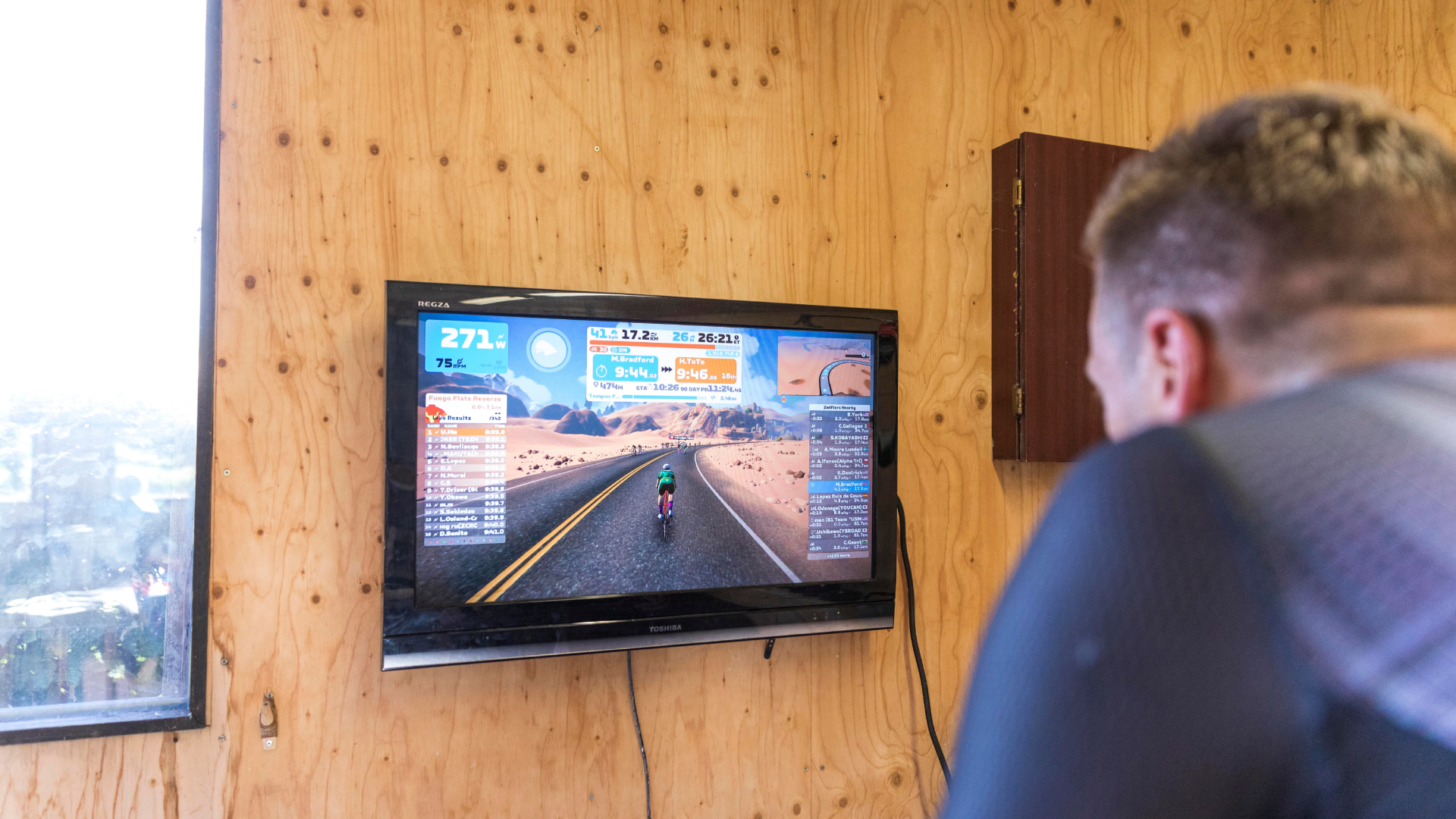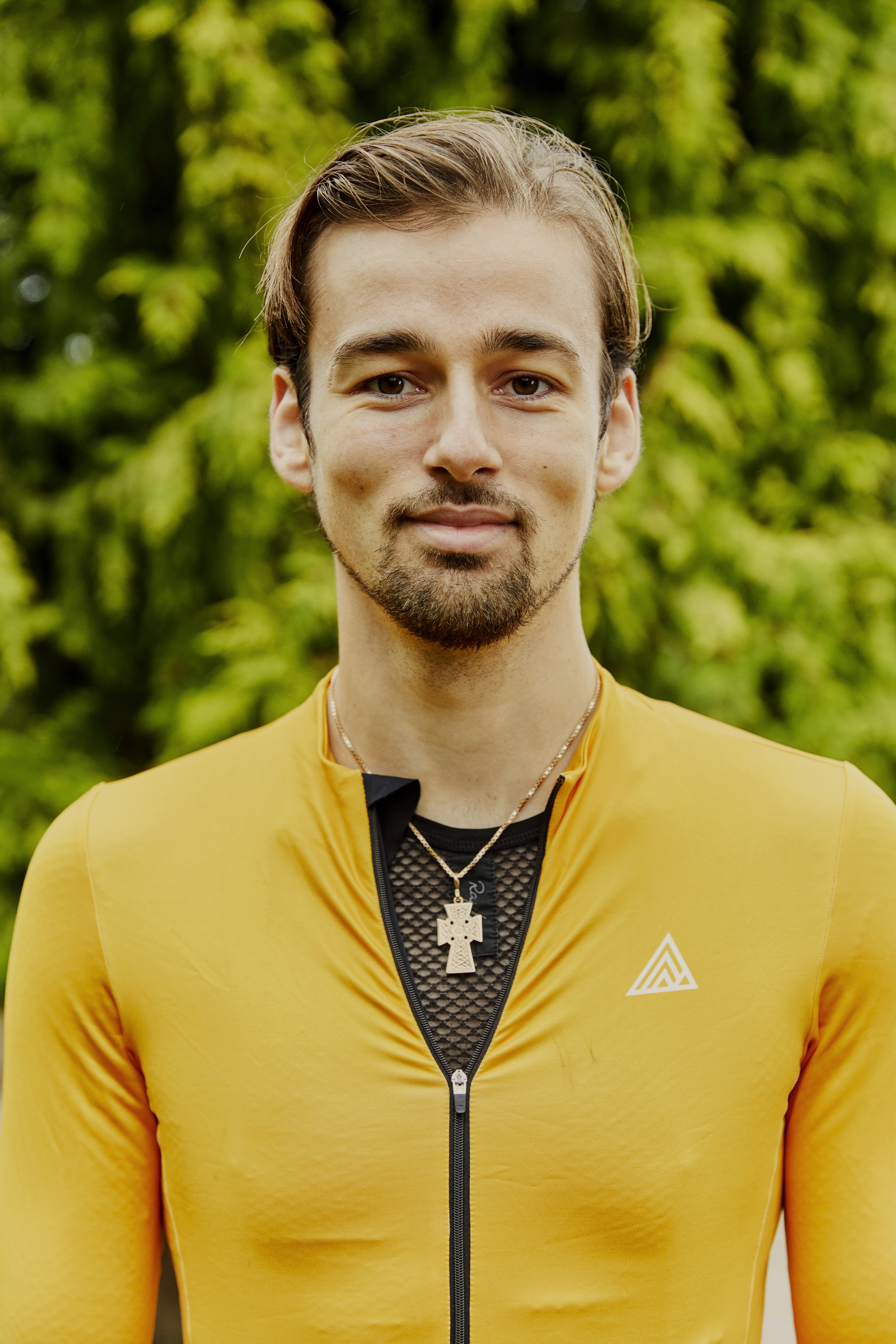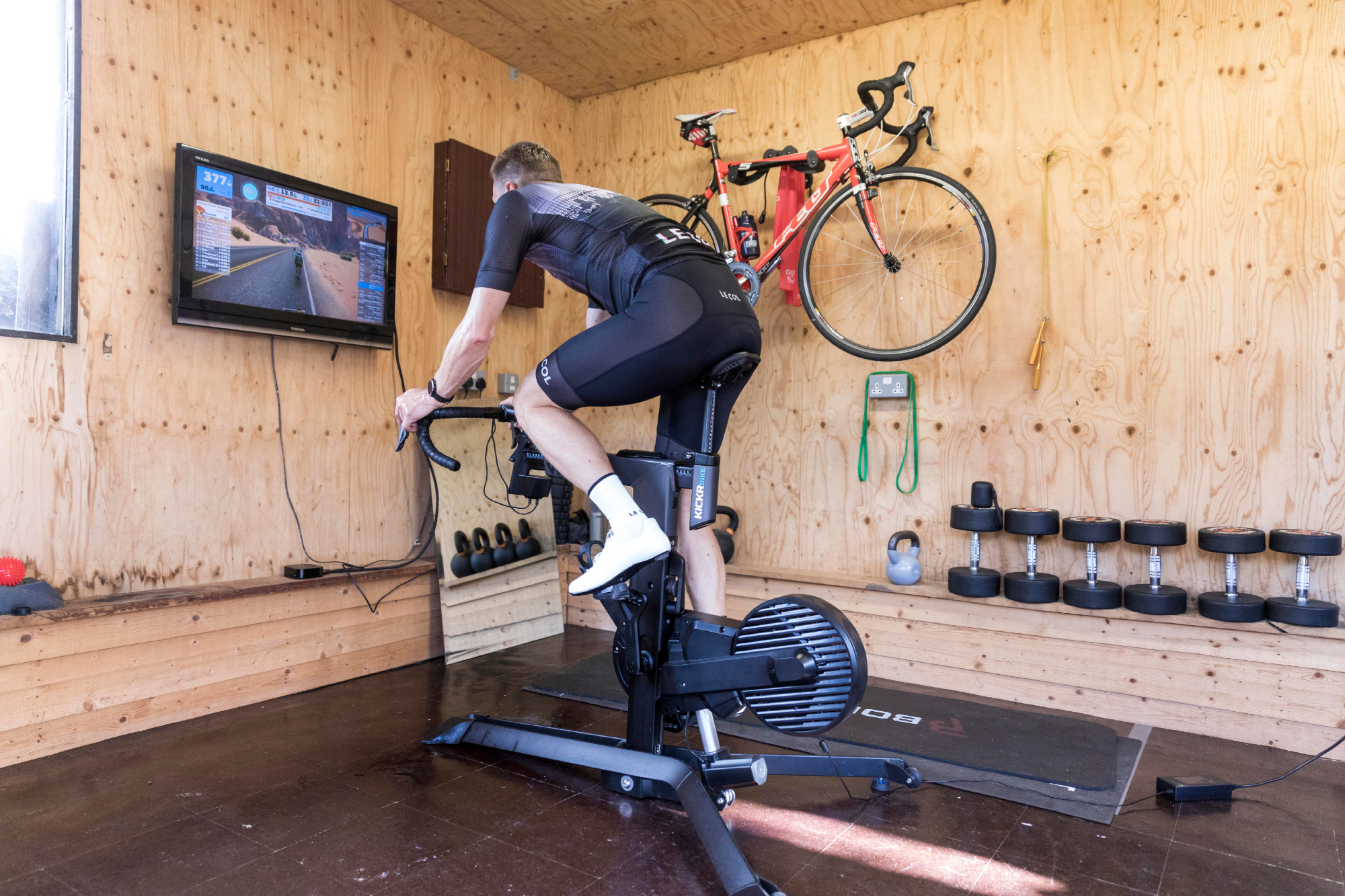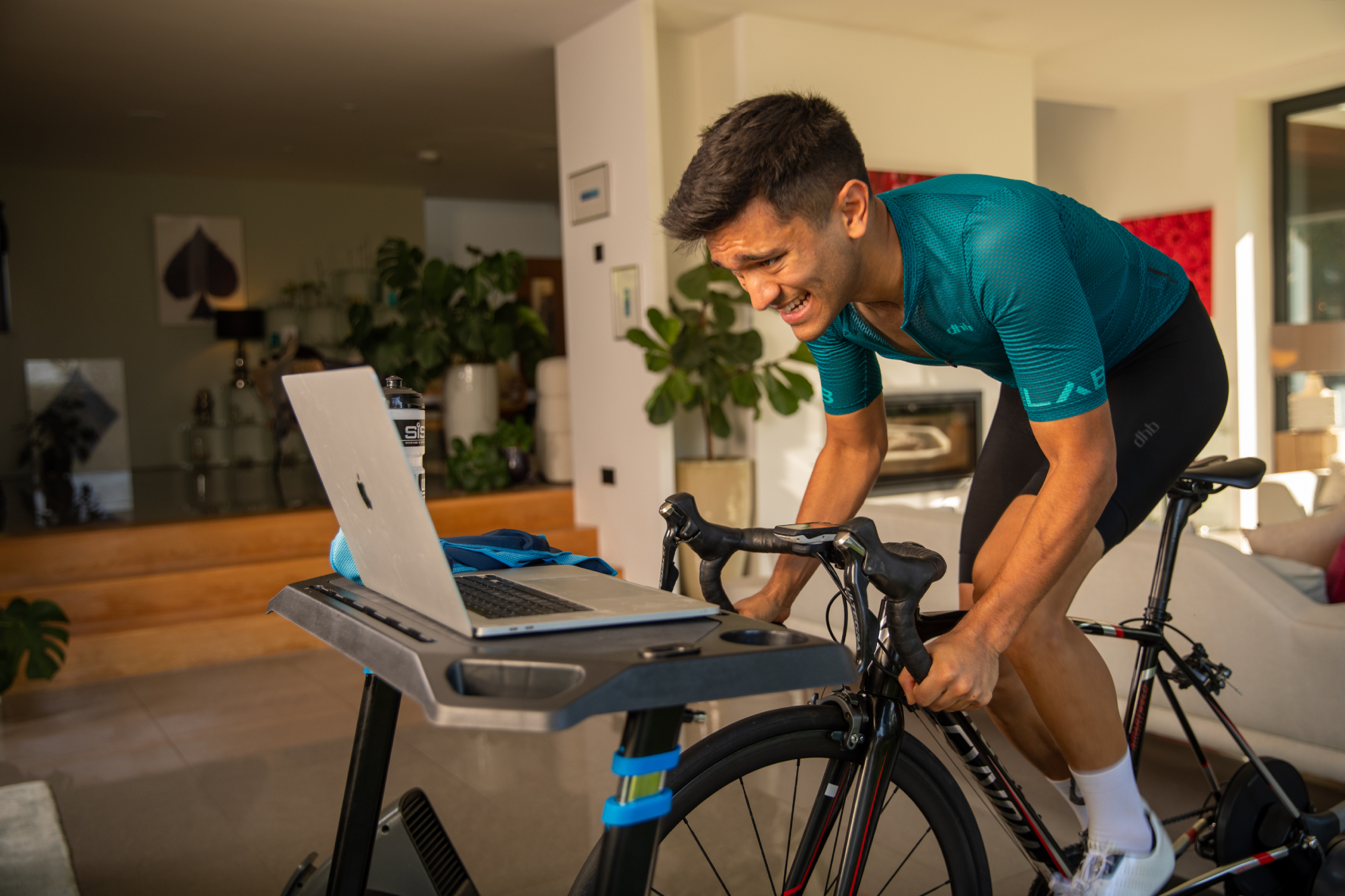Twenty minute effort or a ramp test: which Zwift FTP test should you do, and how to get the best result you can
Read our how-to on taking an FTP test on Zwift


Whether you’re just starting to add more structure to your training or if you’re seasoned amateur racer, setting fitness baselines and keeping track of your progress is vitally important.
There are several possible ways of gauging where your fitness is at, but one most widely used is the Functional Threshold Power test (or FTP for short). This can be conducted easily on the best indoor training apps for cycling - including Zwift - and having an accurate idea of your FTP is also useful for ensuring that your training sessions are done at the correct intensity so that you get the most out of your sessions.
Now, doing an FTP test outside can be difficult as ideally we need 20 minutes of uninterrupted road. For many people, doing the test indoors will be the only practical option and, anyway, the chances are that the amount of power you'll be able to put out indoors is different to outdoors - so it makes sense to have your power targets calibrated to the conditions/environment.
What are Zwift's FTP tests?

Backing up right to the very start, you'll probably want to find where Zwift keeps its FTP tests on the platform in the first place.
First you'll need to navigate to the 'workouts' section of the app and, once there, you'll need to find the category 'FTP Tests'. You'll see in that folder there are four different tests you can choose from: two Zwift FTP test and two Ramp tests. We'll run you through the differences between them and which one might be best for you!
First off, the FTP tests. The two choices are the regular (73min version) and the shorter (45min). For both of these tests, it's helpful having a rough estimate of your current FTP number, as the primer efforts in the warm-up before the actual 20-min test set at approximately 110 - 120% of your FTP.
Both of these tests use 95% of your 20 min power, the only difference between the two being the duration of the warm up.
Get The Leadout Newsletter
The latest race content, interviews, features, reviews and expert buying guides, direct to your inbox!
Ideally, it's good to do the full Zwift FTP Test, as the longer warm up should help you get your muscles nicely warmed up for the effort. The shorter one just offers a bit of a time saving for those time crunched.
How to get the best results on your FTP test on Zwift

For the 20-minute test itself, this requires a good ability to pace the effort, so may not be suitable for less experienced cyclists. The key is to start conservatively rather than too hard. Otherwise you'll get a build-up of fatigue metabolites which will require more oxygen to remove, therefore reducing your average power for the 20-mins.
If you have an estimate for your FTP, start around or just below that. Then, after 10-mins, increase the power a bit and keep building as you get to the five-mins-to-go mark, two-mins, and then one minute to go. You want to be able to still be pushing the pedals at the end, yet also be absolutely spent afterwards - it is a difficult balancing act to pull off, but one that gets easier after you've done a few. Ideally, try to keep to 80-95 RPM and remain seated throughout the test.
Ramp Test on Zwift
For those not wanting to do the 20 minutes flat out, Zwift has the alterative of two ramp tests for determining FTP - the does-what-it-says-on-the-tin, 'The Ramp Test' (43min), and 'The Ramp Test Lite' (39min).
The idea of doing a ramp test is that by using short one minute intervals which get progressively harder, you reach your Maximal Aerobic Power (MAP) by the end of the final minute that you can sustain. From that value, Zwift then predicts your FTP as a percentage of your MAP. This link between Maximal Aerobic Power and FTP was identified and quantified by sports-scientist and cycling coach Ric Stern back in the late 90s, specifically that FTP correlates to between 72 and 77% of MAP - with 75% being the value generally used in calculations.
The main reason for doing a Ramp Test rather than a continuous effort is that it is often easier to conduct as it does not require the pacing that a 20 minute effort requires. Simply keep an RPM of around 80-95, stay seated, and hit the power targets. Once you can’t pedal anymore, the final completed minute is what you base your results off of.
The difference between The Ramp Test and The Ramp Test Lite is that the Lite starts at 50 watts and increases by 10 watts every one minute, whereas the plain Ramp Test starts at 100 watts and increases by 20 watts every minute, this is the commonly used procedure for testing those with an estimated FTP of maybe 280+ watts.
Zwift recommends the Ramp Test Lite for people who are less than 60kg/132Ibs or are newer to cycling. This is because, ideally, the ramp process should last for 5-20 minutes according to Zwift -scientific literature suggests ~14-18 minutes for the ramp length - otherwise the start point of the ramp (or the watt increase per ramp) is too low and fatigue starts to affect the results.
Although ramp tests have been found to be fairly accurate for determining FTP, there are some limitations. Firstly, some riders are more anaerobically capable than others - and some have a high FTP relative to their MAP or VO2 Max.
This means that two individuals who may both have an FTP of 300 watts after a 20-minute test, could get an FTP of 330 or 270 watts for their ramp test results.
Which FTP test on Zwift is best?
I would say, ideally, do both the 20 minute effort and the ramp test as this way you can get a comparison between the two - which can be useful for determining if you have a weakness in your FTP or in your MAP. A high Ramp FTP compared to your 20-min value means you likely need to improve your lactate threshold and sustainable efforts such as TTs and long climbs.
Whereas if it's the other way round, that means you may have a weak peak aerobic system - which is needed for track pursuits, hill climbs, or end-of-race efforts. If you are only going to use one test, make sure you are consistant and continue doing the same test.
Also, to perform your best in your FTP, you ideally don’t want to have a stressful day beforehand. So, good bed time, low stress training day, and also making sure your glycogen stores are topped up nicely for the effort. Even a gel beforehand or sipping an energy drink during are good ways to maximise performance.
Once you have done any of these Zwift FTP tests, Zwift will update your FTP automatically and base future cycling training zones and sessions off of that test. Zwift will also update your FTP if you set a new 20 minute power that is better than your previous 20 minute best, which can happen during races, in particular those with longer climbs.
However, it is worth noting that it will not decrease automatically, so say after a long time off the bike your FTP goes down, you will have to manually make an adjustment.
What is a good FTP test score on Zwift?
As for what a good FTP is, the answer is there isn’t really a good or bad one. Obviously we’d all love one as high as Wout Van Aert or Filippo Ganna, but whatever you achieve is a baseline that you can work on yourself to improve.
That said, there are some ways of pinpointing and plotting progress. Zwift events are split into FTP based categories: D = 0-2.4 W/Kg, C = 2.5-3.1, B = 3.2-3.9, A = 4.0+. For those on ZwiftPower, A+ = 4.6 W/Kg and up. So if you are wanting to move up a category, these are the targets you will want to hit.
Now once you’ve taken an FTP test, be sure to check out our guide to the best Zwift workouts and training plans to build your fitness, there’s something for everyone - whether you’re a beginner or looking for the best session for weight loss, or aiming to improve your climbing ability.

Thank you for reading 20 articles this month* Join now for unlimited access
Enjoy your first month for just £1 / $1 / €1
*Read 5 free articles per month without a subscription

Join now for unlimited access
Try first month for just £1 / $1 / €1
Andy is a Sport & Exercise Scientist, fully qualified and experienced Cycling Coach, Sports Director, Freelance Writer, and Performance Consultant. He spent 3 years riding for a UCI cycling team and 7 years as a BC Elite rider, competing in prestigious events such as the Tour of Britain and the Volta a Portugal.
Graduating with a first-class honours degree in Sport & Exercise Sciences, he continues to pursue his interest in research in the field of Sport Science alongside managing his coaching business, ATP Performance. He also works as a Wind Tunnel operator and Performance Consultant at the Silverstone Sports Engineering Hub, working with individuals, teams, and businesses to optimise performance and develop products.
-
 'I'll take a top 10, that's alright in the end' - Fred Wright finishes best of British at Paris-Roubaix
'I'll take a top 10, that's alright in the end' - Fred Wright finishes best of British at Paris-RoubaixBahrain-Victorious rider came back from a mechanical on the Arenberg to place ninth
By Adam Becket Published
-
 'This is the furthest ride I've actually ever done' - Matthew Brennan lights up Paris-Roubaix at 19 years old
'This is the furthest ride I've actually ever done' - Matthew Brennan lights up Paris-Roubaix at 19 years oldThe day's youngest rider reflects on 'killer' Monument debut
By Tom Davidson Published